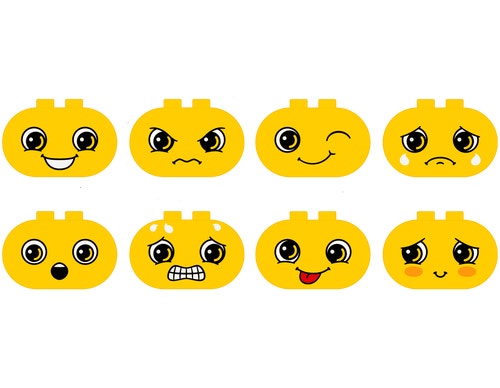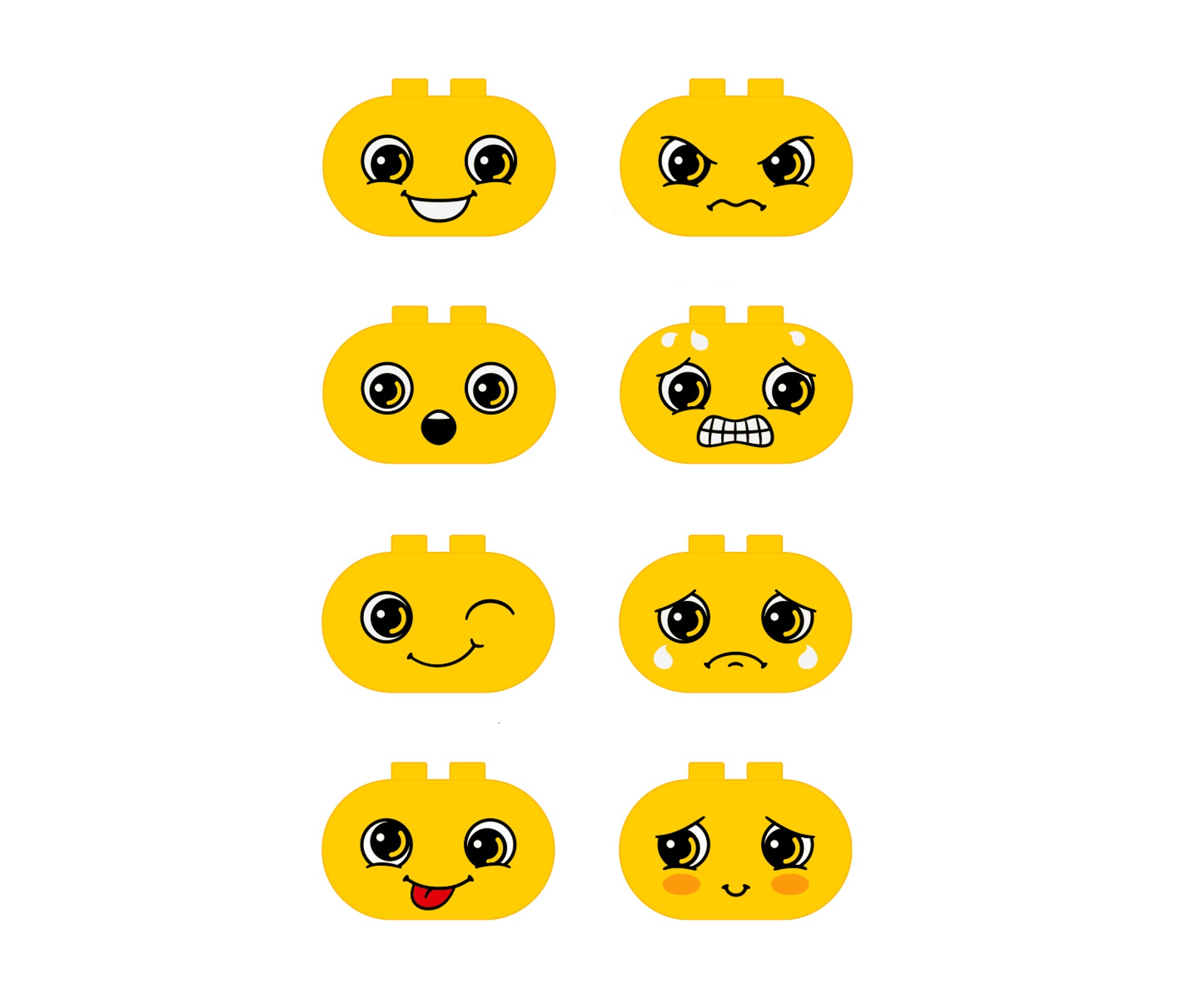Explore the Face Bricks
Understand different terms for emotions, and how facial expressions and body language show how people are feeling.

Connect
Set aside the eight face bricks.
Tell the children they will use some LEGO® DUPLO bricks to play a game about emotions. Ask the children to name some different emotions.
Hold up the bricks, one at a time and encourage the children to notice the facial expression on each brick.
Point out the eye shape and mouth shape on the bricks.
Ask the children to tell about a time when they were happy. Ask them to show how their faces look when they are happy.
Explain that different words are used to describe emotions and that these words may have similar meanings, but are still a little bit different.
The words, angry, grumpy, and annoyed could be used to describe the expression on the circled brick shown in the sidebar.
Discuss the differences and similarities between feeling angry, grumpy, and annoyed. Give the children other examples such as happy, cheerful, and joyful.Play a game with the children. Ask one child to secretly choose a face brick and to not show the brick to anyone else.
Ask the child to show the same emotion on his or her own face.
Ask the other children to guess which emotion is being shown.
Continue playing this game until the children are able to rapidly identify the different facial expressions. They can give multiple responses for the same brick as long as they make sense.
Consider asking questions like:
- What emotion do you see on this face?
- How can you tell that this face is happy/sad?

Construct
Tell the children to work with a building buddy to build a character using a face brick.
Contemplate
Tell the children that when you understand how someone is feeling, you can respond in a way that makes sense. Discuss the appropriate ways to respond to different emotions. Explain that what works well in one situation may not work the same way in a different situation.
Example: When someone is feeling sad, you may be able to cheer them up with a silly joke. However, in a different situation, the person may need some time and space to feel the sadness.
Discuss that looking at body language is also a way to understand how someone is feeling. Use your own body language to show the children different emotions and ask them to identify the emotions.
Consider asking questions like:
- Why is it important to recognize different emotions?
- What are some other ways you can tell how someone is feeling besides by the way his or her face looks?
Continue
Tell the children to work with their building buddies to change their characters so that they show their emotions with body language.
When they have finished building, ask the children to take turns showing their models and allowing the other children to call out the emotion the figure is expressing.
Did you notice?
Observing the following skills can help you monitor whether the children are developing socially and emotionally.
- Children are able to recognize and name emotions.
- Children are able to understand other people’s feelings.
Teacher Support
Children will :
Become familiar with different terms for emotions.
Begin to understand that facial expressions and body language show how people are feeling.
Children are able to recognize and name emotions.
Children are able to understand other people’s feelings.




